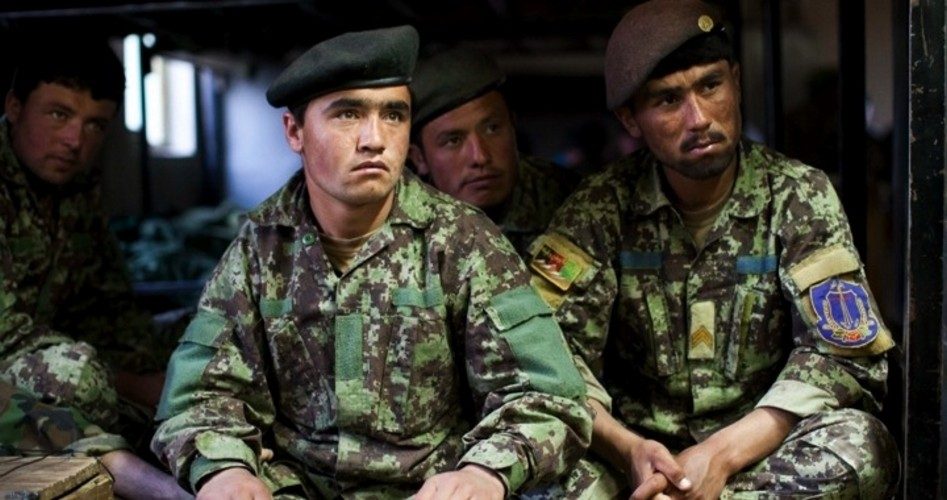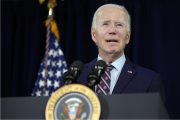
Only one of the Afghan National Army’s 23 brigades is capable of operating without U.S. or NATO military assistance, the New York Times reported, following the release Monday of a Pentagon report to Congress. The Department of Defense Report on Progress Toward Security and Stability in Afghanistan tells of “mixed progress” in a war now in its 12th year since the United States and NATO forces invaded the land known as the “graveyard of empires” soon after the al Qaeda September 11, 2001 attacks on the United States.
The coalition forces quickly toppled the Taliban regime in Kabul and have since driven al Qaeda out of the country. By 2010, only 50 to 100 members of the terrorist organization remained in the country, Secretary of Defense Leon Panetta said at the time, with many finding refuge in neighboring Pakistan and other countries in the region. The ongoing battle with Taliban and other insurgents, however, has been plagued by rebel infiltration of Afghan military and police units and attacks on U.S. and NATO personnel from within the Afghan ranks. More than 37″insider attacks” on the International Security Assistance Force have taken place so far in 2012, the report said, compared to just to in 2007.
The report, covering the six-month period of April through September of this year, says Taliban strength is declining, especially in the province of Kandahar, the organization’s operational base. Insurgent attacks are increasingly taking place away from these populated centers, the report finds, with nearly half of all attacks occurring in 17 districts that contain just 5 percent of the country’s population. Yet the “Taliban-led insurgency remains adaptive and determined,” the report notes, “and retains the capability to emplace substantial numbers of IEDs [incendiary explosive devices] and to conduct isolated high-profile attacks.” The insurgents have increasingly resorted to “asymmetric tactics,” including assassinations and kidnappings in their effort to regain territory and influence the report says.
While the report cites improved cooperation between Afghanistan and Pakistan, the area posing the greatest security problem remains the Afghan Pakistan border, where sanctuaries for the insurgents and the “financial and operational support that insurgents receive from various sources,” keeps the border region “volatile,” the report says.
Enemy attacks have declined by 12 percent since U.S. sent an additional 33,000 troops into the country in the “surge” of 2010. The last of the surge forces left the country in September of this year, however, and the remaining 68,000 American combat troops due to leave by the end of 2014, according to the timetable set by President Obama. Political pressures may lead to increased demand for earlier withdrawal, however, from a war that has grown unpopular with the American public. More than 2,000 American military personnel have been killed in Afghanistan, with more than 1,200 of those deaths occurring since the 2010 surge. And the war, costing the United States more than $500 billion so far, carries a hefty price tag at a time when the military is facing substantial budget cuts and the Congress and the White House have been unable to reach an agreement on cutting the annual deficits and reducing the national debt, now exceeding an official count of $16 trillion.
A Defense Department official, briefing reporters at the Pentagon, acknowledged it would be a “challenge” to have Afghan forces ready to provide the nation’s security by 2014. The report also cited problems in the Afghan government, including “widespread corruption, limited human capacity, lack of access to rural areas due to a lack of security, a lack of coordination between the central government and the Afghan provinces and districts, and an uneven distribution of power among the judicial, legislative and executive branches.”
That a report from our nation’s military should include concerns about an “uneven distribution of power among the judicial, legislative and executive branches” of government in Afghanistan is evidence of the degree to which the United States armed forces are involved in nation-building in Afghanistan and the extent to which providing for that nation’s security may be bankrupting our own. The American mission in Afghanistan is not the only or even the biggest factor contributing to our national debt, but at cost of half a trillion and rising, its contribution is significant.
“I think the biggest threat we have to our national security is our debt,” Admiral Mike Mullen, then chairman of the Joint Chiefs of Staff, said in July of 2010, the year of the surge. The strength of the Taliban in Afghanistan may have diminished since then, as the Pentagon. Our debt here at home has increased.
Photo of Afghan National Army soldiers: AP Images


